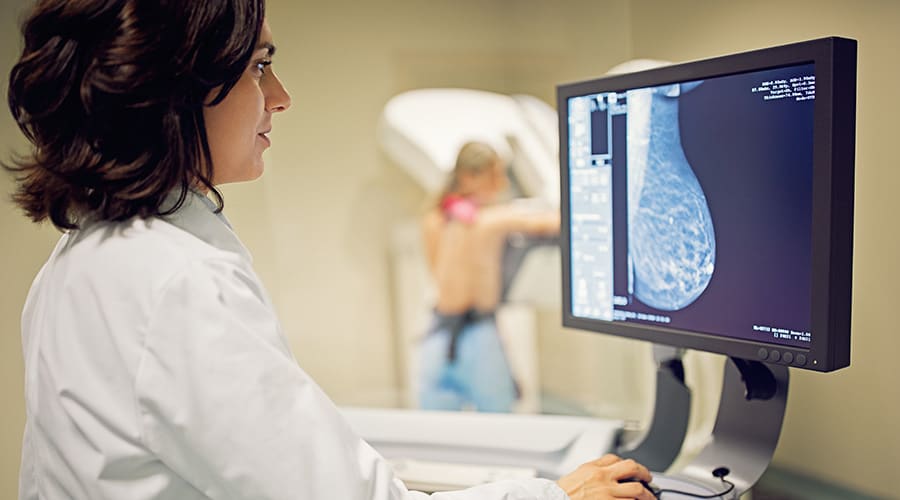
Breast cancer risk and statistics
Though breast cancer rates have been declining since 1989, it remains one of the leading causes of cancer-related deaths among American women. About 1 in 8 women will develop breast cancer in their lifetime, but the risk isn’t exclusive to women. Roughly 1 in 833 men will get a breast cancer diagnosis in their lifetime as well.
Age is a significant risk factor for developing breast cancer, as well as gender, genetics, and family history. While recommendations vary, most healthcare providers recommend that women begin annual mammograms around 40.
Related: Breast Cancer: Exploring Current Detection, Screening, and Treatment Strategies
Diagnostic information and symptoms
Breast cancer typically has no initial symptoms, which is why breast and underarm self-exams are important. Most breast cancers begin in the milk glands (lobules) or the ducts that connect the lobules to the nipple.
Symptoms may include a sense of “breast heaviness,” nipple discharge or retraction, swelling, thickening, or redness to the skin. Any or all of these symptoms require immediate medical attention and follow-up. Once a problem is detected, the next step is a screening mammogram or tissue biopsy.
What is a mammogram?
Put simply, a mammogram is an x-ray picture of the breast. Though simple, many women consider the procedure uncomfortable at best. For cystic or premenstrual breasts, the process of flattening the breast tissue may cause actual pain. NSAIDS taken after the mammogram may help alleviate this pain.
For women of average risk, healthcare professionals recommend an initial mammogram between the ages of 40-49, for women with average risk. Various organizations differ slightly in their recommendations
- The American Cancer Society (ACS) recommends women ages 45-49 of average risk should begin mammograms every year.
- The American College of Obstetricians and Gynecologists (ACOG) and the American College of Radiology (ACR) also recommend annual mammography for women in this age grouping.
- The U.S. Preventive Services Task Force (USPSTF) and the American Academy of Family Physicians (AAFP) suggest that women of average risk ages 40-49 should make their own decisions regarding annual or biennial mammograms.
Mammogram screening is not perfect. While it can help detect issues early, there remains a risk of false positive findings. This can result in ultrasound exams, MRI follow-up, and/or biopsy to rule out malignancy. With mammograms, about 10% of women could get called back for further testing. Of that subgroup, only 0.5% will be found to have cancer.
Exceptions
Women with a BRCA mutation or a strong family history of breast cancer (a male or female parent or sibling with breast cancer) should start screenings earlier and discuss additional testing (e.g. ultrasound imaging) with their provider.
Additionally, anyone who has a question about any abnormal or questionable finding in their breast tissue, nipple, underarm, etc. should seek immediate medical attention no matter their age or medical history.
Trans men and women should discuss breast cancer screenings with their healthcare providers. They should determine the best screening schedule based on individual risk levels.
Related: Oncology Nursing: A Comprehensive Review
Annual mammograms and insurance plans
Most insurance plans are required to cover the cost of mammography for women between the ages of 40-64 with no out-of-pocket costs. The USPSTF recommends that women ages 50 to 74 years old receive a mammogram every two years.
For individuals without financial means or decreased resources to obtain mammography, CDC offers a website with instructions for low-cost or free mammography.





